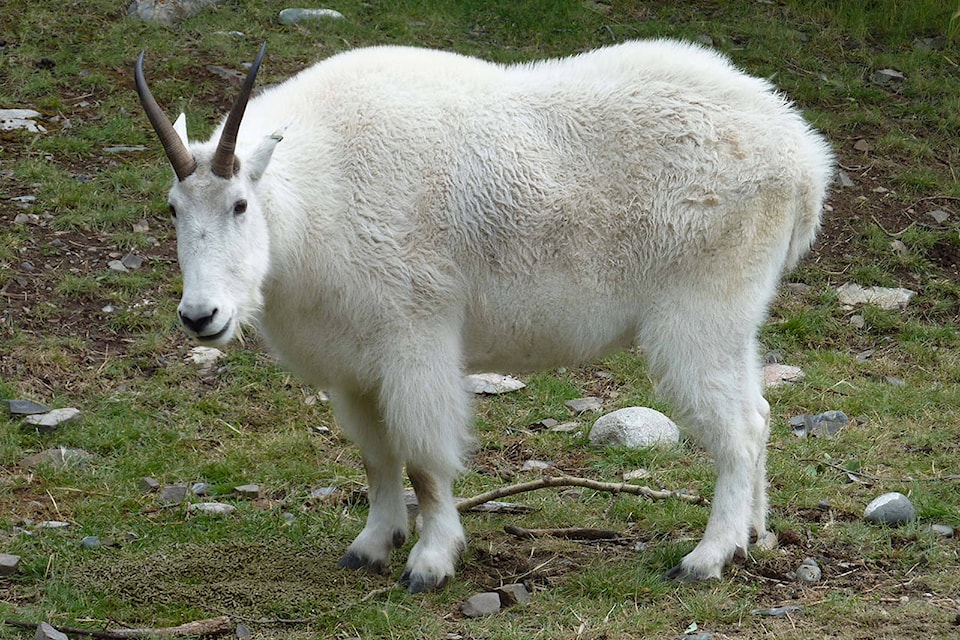Have you seen a mountain goat in your yard, crossing the highway or swimming the Bulkley River in the last 10 years?If so, the local BC Mountain Goat Society wants to hear from you.
The society is conducting a local survey to find out how many mountain goats are moving from one mountain to another. They’re especially interested in whether goats are successful getting over fences, through yards, across highways, past dogs, across rivers, etc.
The society wants to hear from truck drivers, farmers, fishers and anyone else who has seen a mountain goat crossing through forest from one mountain to another anywhere in the area bound by the Bait Range to the east, the Howson Range and the Telkwa Pass to the west, Hazelton to the north and Houston to the south. We would like to know when and where you saw the goat, and whether the mountain goat was alive, injured or deceased. Approximate date and location are good enough. If you have a photo, that is even better.
Email mtgoats@bcnorth.ca with your information or phone Jim Easterday at 250-847-4802 evenings. Your privacy will be respected and no personal information will be made public.
Most mountain goats live their entire lives on the mountain where they are born but a small percentage leave their home mountain to visit another mountain. The process is called dispersal and dispersing goats may stay on the new mountain for a day or two, a year or two or the move may be permanent. Most dispersals happen in July, August or September. The goats are most often two to three-year-old males or females. The goats may move in daylight or at night and usually it is a single goat or a pair of mountain goats.
Dispersal is very important for mountain goats. Many mountain goat herds are isolated from each other and inbreeding can occur. Dispersing goats can contribute their genes to avoid inbreeding that can weaken the health of a herd over time. Dispersing mountain goats can also establish a new herd on a mountain with no previous goat population. Dispersal is how mountain goats occupied many of our local mountains after the last Ice Age 12,000 years ago.
Mountain goats are strong swimmers and walkers. As an example, a goat can cross the Bulkley River valley from Hudson Bay Mountain to the Babine Mountain Park in a day or two. Mountain goats are timid and will avoid contact with people and dogs wherever possible. Since most dispersing goats are only two years old, travel across our major river valleys will be the first time they encounter cars, livestock, fences, dogs and houses so they may appear confused.
Information about dispersal can be important for highway and industrial planning as well as for understanding mountain goat behaviour.
– Submitted by the BC Mountain Goat Society.
